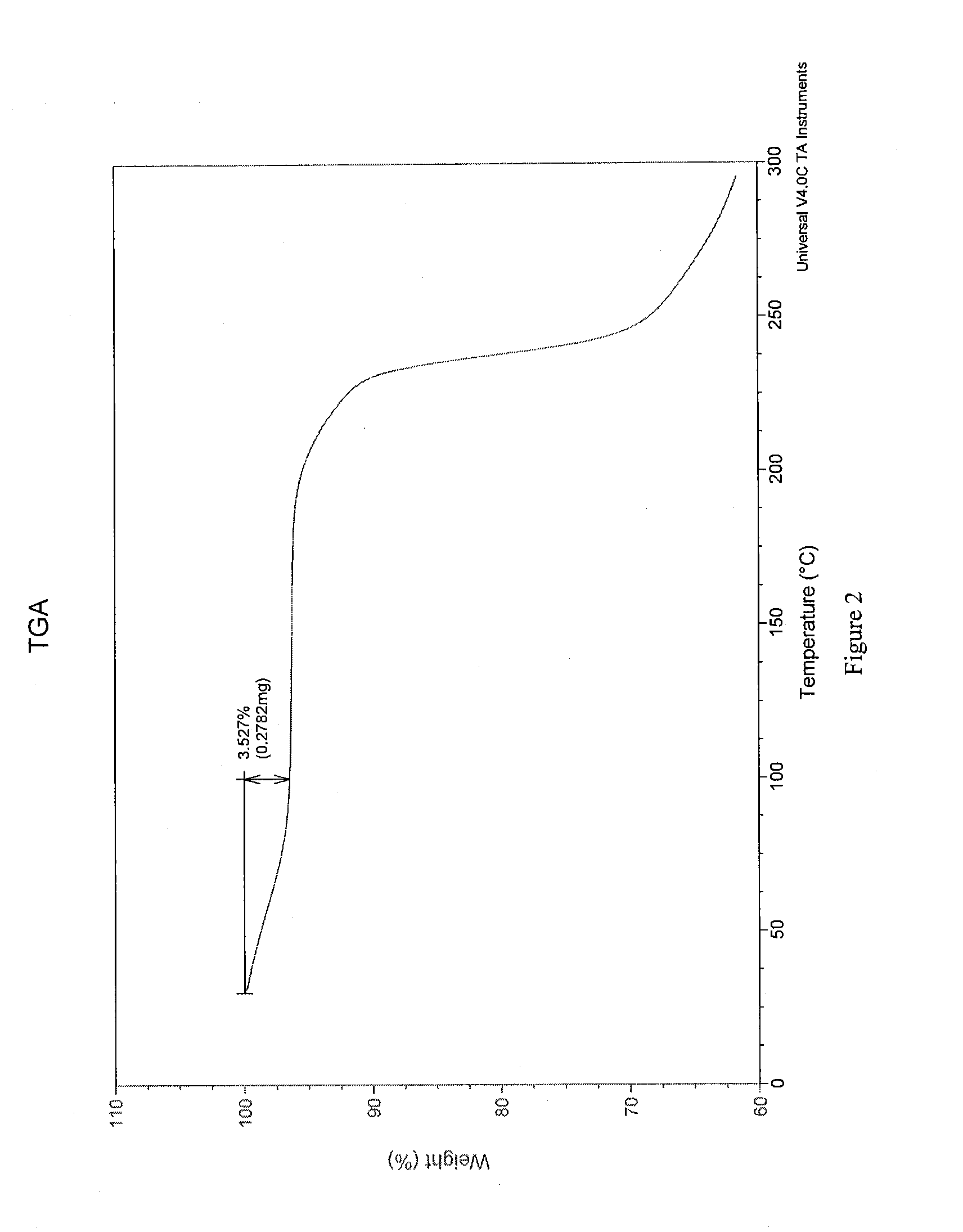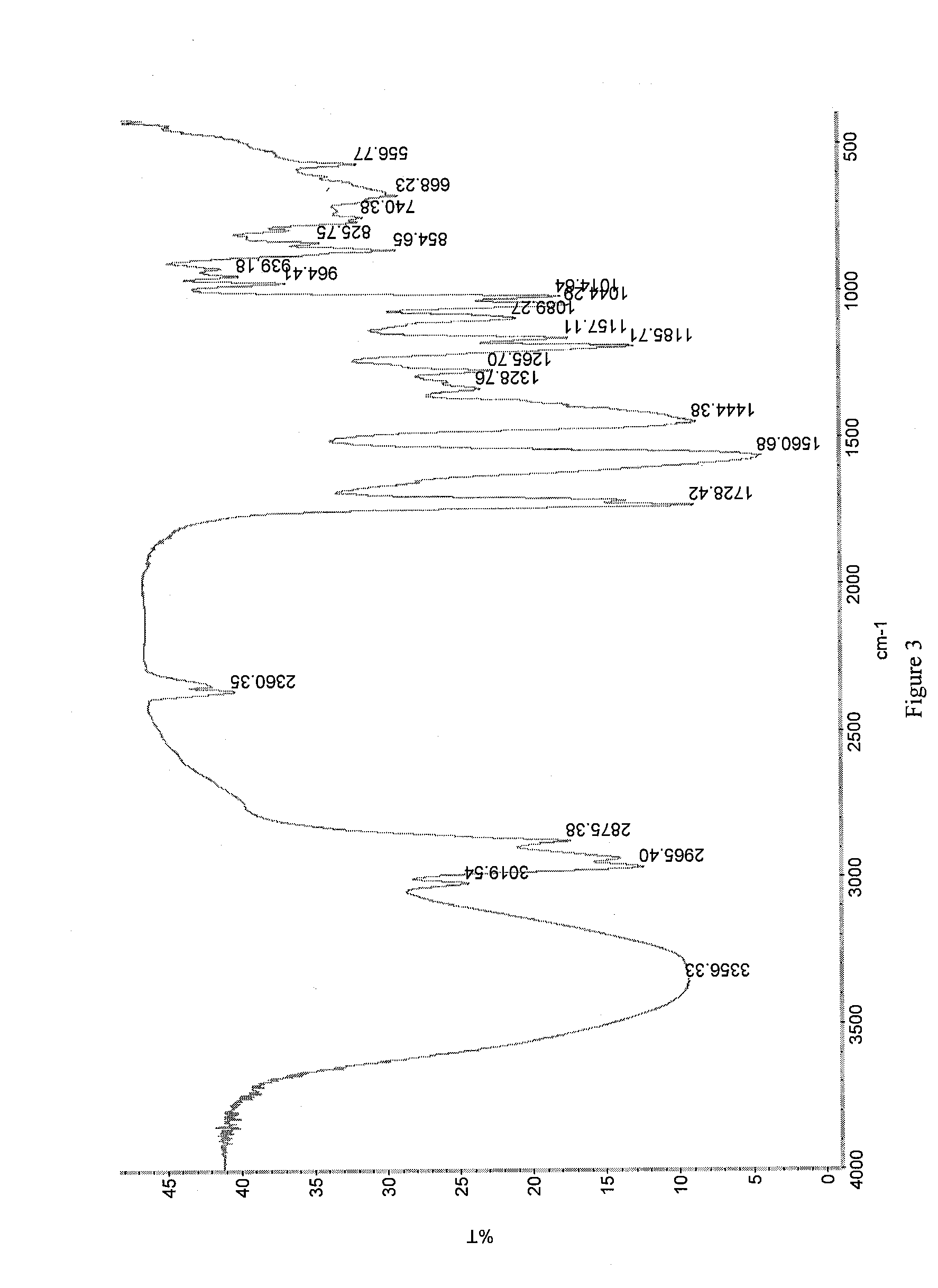Novel Statin Pharmaceutical Compositions and Related Methods of Treatment
a statin and composition technology, applied in the field of new omega3 oil suspensions of statins, can solve the problems of limited efficacy or tolerability of all these treatments, and achieve the effect of being readily bioavailabl
- Summary
- Abstract
- Description
- Claims
- Application Information
AI Technical Summary
Benefits of technology
Problems solved by technology
Method used
Image
Examples
example 1a
Pravastatin Calcium Salt
[0125]To a solution ofpravastatinNa salt (1.470 g; 3.292 mmol) in water (15.0 mL) was added a solution of calcium acetate (268 mg; 1.70 mmol) also in water (5.0 mL). The resulting solution was concentrated (through evaporation of water via a stream of nitrogen gas) to about 15 mL and cooled to 0 degrees C. A white solid precipitated and was collected via filtration. The filtrate was cooled again to 0 degrees C. which yielded further precipitation. After filtration, the solids were combined and dried in a dessicator. The resultant solid was determined to be pravastatin calcium salt. The resultant salt was a 2:1 pravastatin to calcium salt.
[0126]Crystals representative of those obtained by completing the method above were characterized using PXRD, TGA, IR spectroscopy, and dynamic vapor sorption (DVS). FIG. 1 shows the PXRD diffractogram of the pravastatin calcium salt (Bruker, data as collected). Based on the PXRD diffractogram, the pravastatin calcium salt ap...
example 1b
Pravastatin Calcium Salt
[0131]A second method was also used to prepare pravastatin calcium salt: To a solution of pravastatin Na salt (496 mg; 1.11 mmol) in water (5.0 mL) was added a solution of calcium chloride (69 mg; 0.62 mmol) also in water (2.0 mL). The resulting solution was evaporated yielding a white solid. Pravastatin Ca salt was extracted from the solid with dry ethanol (10.0 mL) and filtered. The solution was evaporated yielding an oil which was triturated using diethyl ether (10.0 mL). The powdery white solid (100 mg) was washed with cold water (5.0 mL) and air-dried. The resultant solid was determined to be pravastatin calcium salt.
[0132]Crystals representative of those obtained by completing the method above were characterized using PXRD, TGA, IR spectroscopy, and dynamic vapor sorption (DVS). These data are discussed in Example 1A and shown in FIGS. 1-5.
example 2
Fluvastatin Calcium Salt
[0133]505.9 mg (1.167 mmol) offluvastatinNa salt was dissolved in 15 mL of water. 94.2 mg (0.595 mmol) of calcium acetate was dissolved in 2 mL of water. A precipitate formed immediately with the addition of the calcium acetate solution to the fluvastatin Na solution. Solids were collected by filtration and dried first in a vacuum oven at 65 degrees C. for 0.5 hours and left at room temperature under nitrogen flow overnight. Dried solids were lightly ground in a mortar and pestle before characterization. The resultant solid was characterized using PXRD, DSC, TGA, Raman, and IR spectroscopy and determined to be a calcium salt of fluvastatin. The resultant salt was a 2:1 fluvastatin to calcium salt.
[0134]Solubility measurements of the sodium salt and of the calcium salt of fluvastatin were acquired in water at 23 degrees C. Solubility was measured gravimetrically in deionized water. 5.5 mg of fluvastatin sodium salt was dissolved in about 130 to 150 microliters...
PUM
| Property | Measurement | Unit |
|---|---|---|
| mass percent | aaaaa | aaaaa |
| mass percent | aaaaa | aaaaa |
| mass | aaaaa | aaaaa |
Abstract
Description
Claims
Application Information
 Login to View More
Login to View More - R&D
- Intellectual Property
- Life Sciences
- Materials
- Tech Scout
- Unparalleled Data Quality
- Higher Quality Content
- 60% Fewer Hallucinations
Browse by: Latest US Patents, China's latest patents, Technical Efficacy Thesaurus, Application Domain, Technology Topic, Popular Technical Reports.
© 2025 PatSnap. All rights reserved.Legal|Privacy policy|Modern Slavery Act Transparency Statement|Sitemap|About US| Contact US: help@patsnap.com



